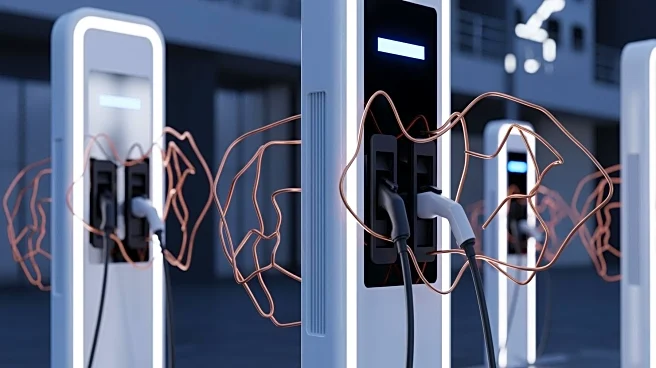What's Happening?
Copper wire thefts have surged in Los Angeles and other cities, targeting electric vehicle (EV) charging stations. Thieves are stripping copper from these high-voltage units, posing a danger to themselves and disrupting EV users. The economic incentive
for these crimes is questionable, as scrap buyers offer limited returns. In response, companies, governments, and EV advocates are exploring solutions such as increased enforcement, penalties, and innovative deterrents like ink-covered cables. Los Angeles-based ChargerHelp and the Los Angeles Cleantech Incubator have highlighted the issue, noting the financial burden of repairing vandalized stations. California has enacted laws to hold agencies accountable for maintaining public EV chargers and impose stricter regulations on metal recycling to curb theft.
Why It's Important?
The rise in copper wire theft at EV charging stations poses a significant threat to the adoption of electric vehicles. As vandalism leads to increased downtime and repair costs, it could deter potential EV buyers and slow the expansion of charging infrastructure. This issue is critical for California, a leader in EV adoption, where Governor Gavin Newsom has signed legislation to address metal theft. The effectiveness of these measures will impact the state's ability to meet its transportation electrification goals and influence national trends in EV infrastructure development.
What's Next?
Efforts to combat copper wire theft at EV chargers will likely intensify, with stakeholders pushing for more robust security measures and legislative action. The success of these initiatives will be crucial in maintaining public confidence in EV infrastructure and supporting the broader transition to electric transportation. Continued collaboration between government agencies, industry leaders, and community organizations will be essential to develop effective solutions and ensure the reliability of EV charging networks.
Beyond the Headlines
The copper wire theft issue highlights broader challenges in securing critical infrastructure against vandalism and theft. It underscores the need for innovative approaches to infrastructure protection and raises questions about the economic factors driving such crimes. As EV adoption grows, addressing these vulnerabilities will be vital to sustaining progress in clean energy and transportation sectors.














